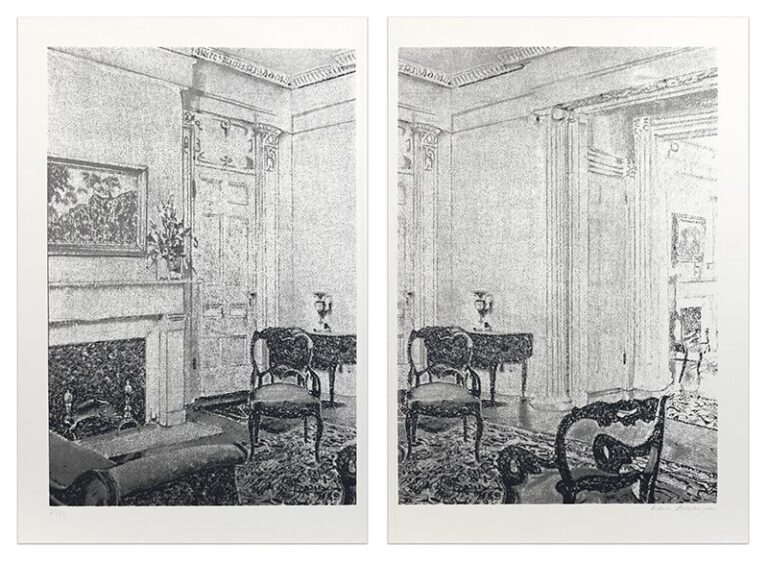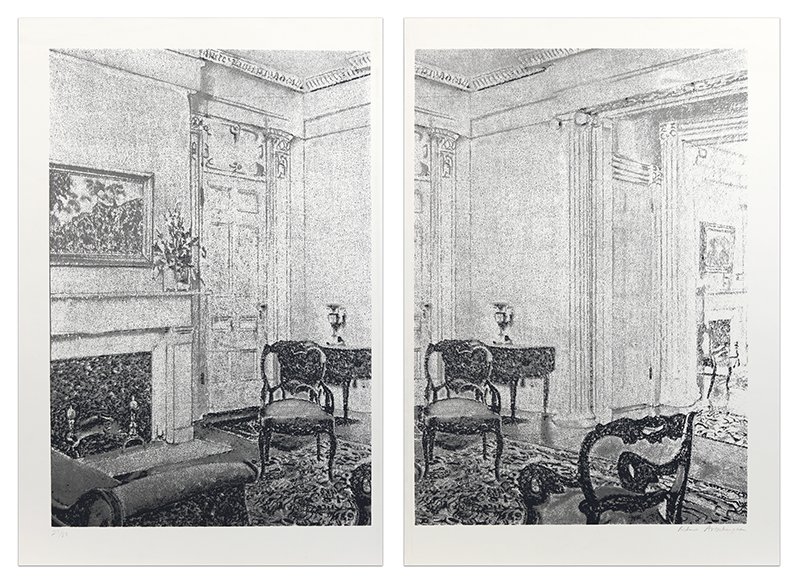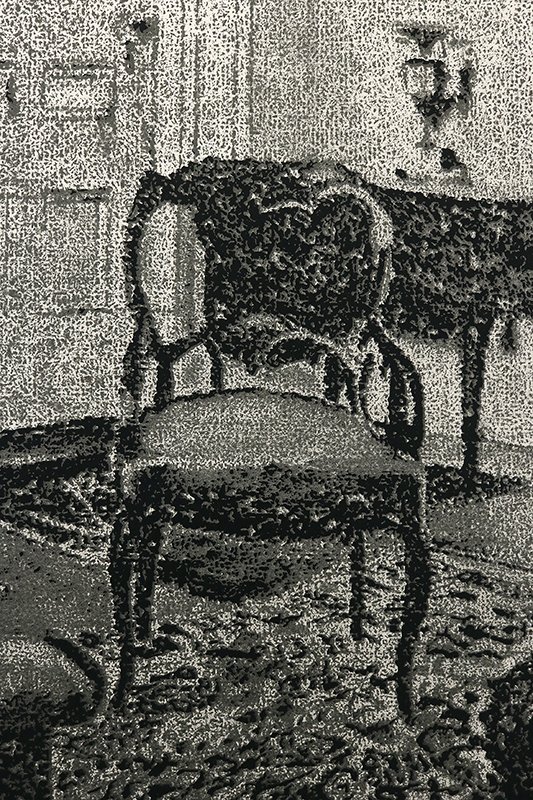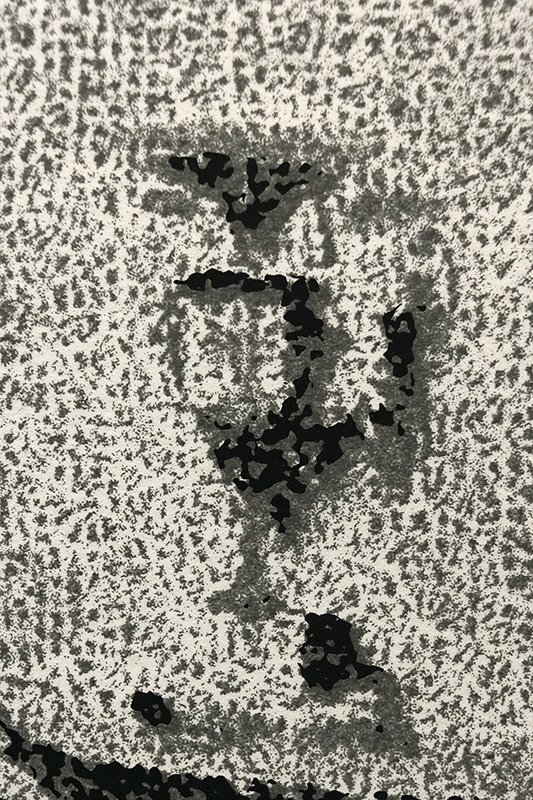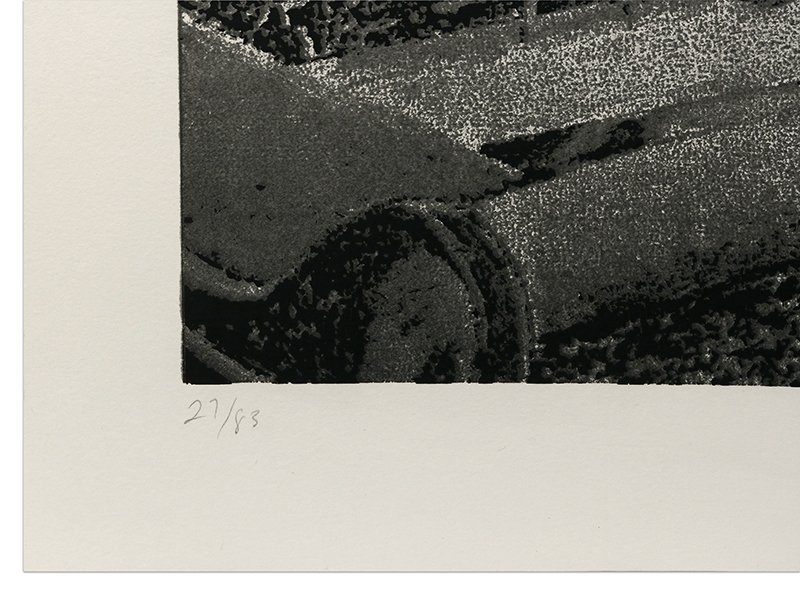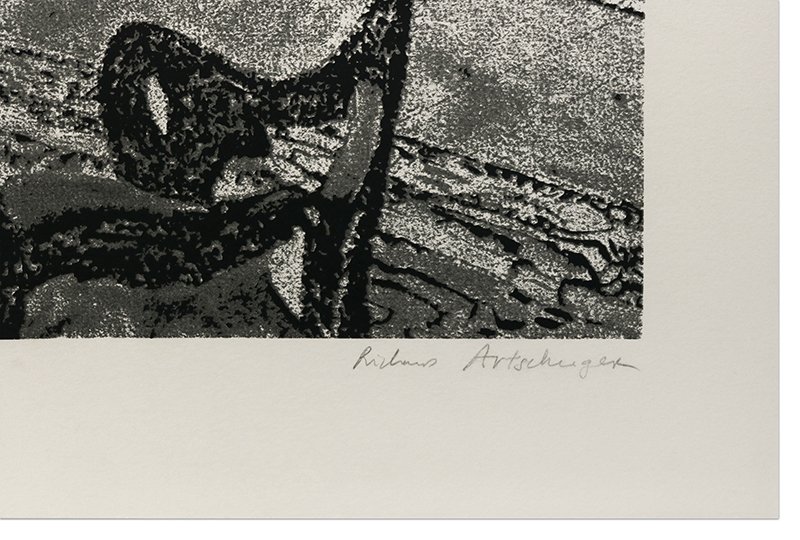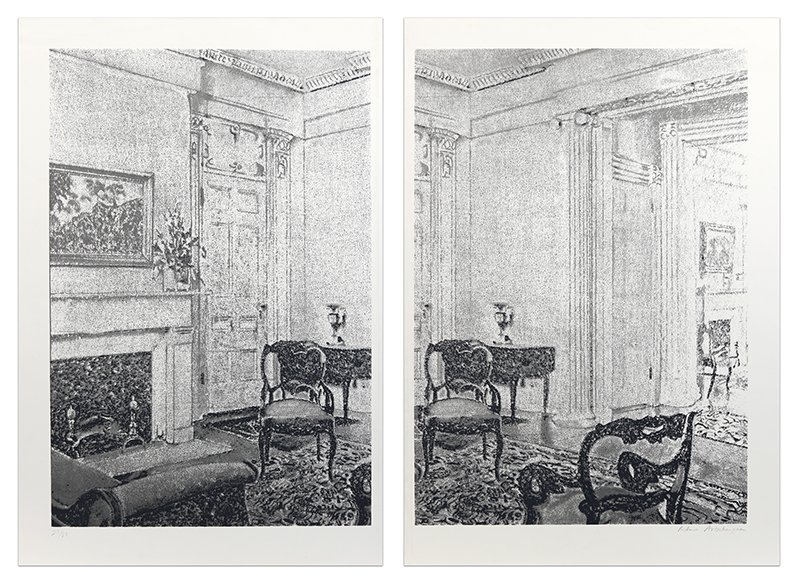Richard Artschwager’s work explores perception and recognition through abstracting, altering and repeating elements. In “Interior,” a single interior is viewed through two juxtaposed images. A viewer’s natural assumption would be that the two images combine to create one scene, either through two different perspectives of the same space (perhaps even stereoscopic) or one image cut into two sections. However, Artschwager has done neither. Each section is part of a single larger image, but each section includes part of the other section, thus repeating certain elements (side table, corner of the room, etc.). The visual texture that Artschwager uses (and for which he is known) provides a sense of nostalgia (like a grainy black and white film). The scenario depicted furthers this sense of nostalgia by being a Victorian-era room. However, by creating the work as a three-color silkscreen, the artist keeps the viewer aware that the piece was not made in that Victorian era. Artschwager’s artistic gestures, often considered enigmatic, provide a viewer with the opportunity the calm pleasure of the familiar, the simple awareness of surface as image, and the dynamic reality of life requiring dynamic and open-ended appreciation.
